This is another post in my series about the odd games that I have decided not to complete, although I will at least try them out for up to an hour or two.
- Bully: Scholarship Edition
- Left 4 Dead 2
- Minion Masters
- Red Orchestra 2: Heroes of Stalingrad
- Just Cause 3
Bully: Scholarship Edition
Developer: Rockstar New England | Released: 2008 | Genre: 3PS, Sandbox
This was sort of an open world game – if you can call a schoolyard and its premises that. It used much the same gameplay as in the later Grand Theft Auto series – main goals such as going to classes, but also lots of opportunities for minigames here and there. Typically started by standing in a lit spot and activating.
The tutorial was quite long – it kept messaging me where to go and what to do. It felt like it would never end, but I welcomed its presence. I learned to fight other bullies, run fast, pick lockers by circling the mouse left and right, and solving clever minigames in the classes.
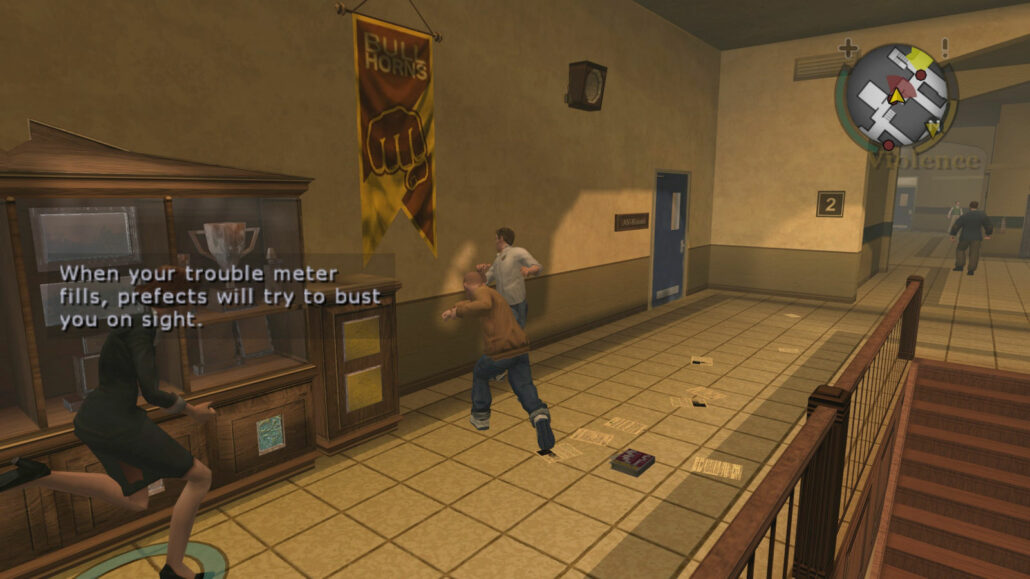
In typical GTA fashion, the health bar was complemented by a trouble meter. As soon as that started filling, the prefects came running for me. I could then hide in a trash can until the trouble meter emptied out. If a prefect caught me, I could even spam a button for wriggling away. The top right radar showed prefects and mission goals as dots. The prefects even had vision cones.
The game was not a walk in the park. There were lots of bullies everywhere, along with caricature nerds with glasses. Sometimes I got pummeled just by running around minding my own business. Minigames were not always easy and if I failed, restarting it forced me to watch a long cutscene all over again.
The save system was awful. I had to go to a specific table in a room and use a “save book” – the abysmal save system in these GTA games has always been the main reason why I’ve never bothered to complete any of them. Also, there were no subtitles. I didn’t have problems understanding the English in the game, but a game with a lot of dialog should always have that option.
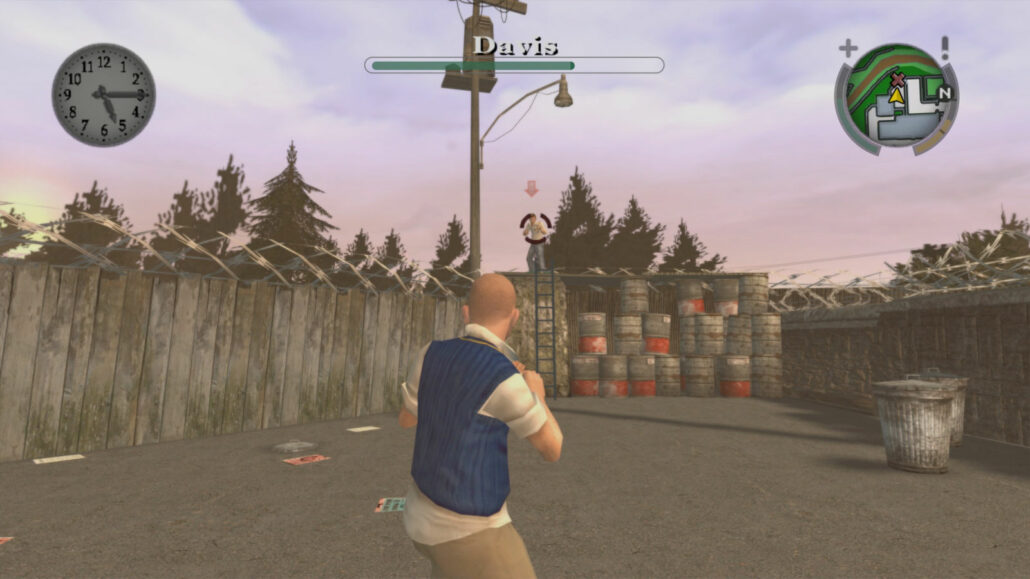
There was one minigame where I had to run fast to catch a slingshot bully. There were fights along the way and gates to be opened, after which I threw bricks and covers at the slingshot bully. When he finally fell down, I won his slingshot. A dorm friend then showed me how to shoot windows in a school bus and even climb a tree to shoot players in a football field.
I tried four classes. The first was chemistry. I had to press hotkeys as the letters came scrolling in from the right side. Failed. Then came English. Great, I thought, I should have a chance there. I did guess a lot of words correctly, but I still failed. Then came art. This was an easy Qix game. Passed. And finally gym class, wrestling against a fatty. Passed.
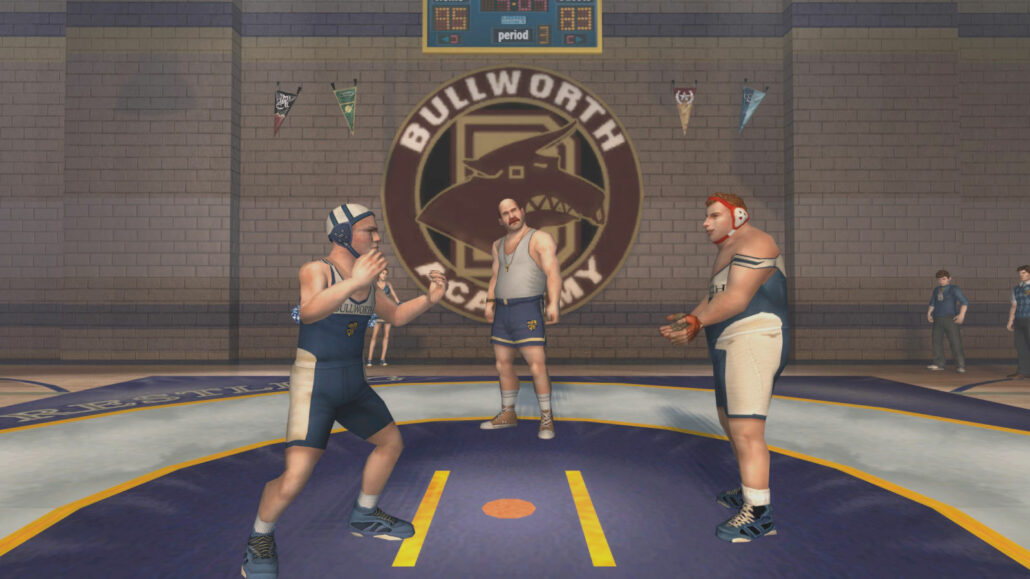
There were so many small gameplay rules that I’m sure I only got to taste a few of them before bailing out one hour later. I could also offer a gift to a girl and get a kiss for gaining more health. I could apologize and even offer money to a really big bully. The fights against other bullies had combos. And I could change my costume in my dorm room. I read it was possible to use bikes too, although I didn’t get that far.
Left 4 Dead 2
Developer: Valve Corporation | Released: 2009 | Genre: FPS, Horror
I’m not sure why I have this – I don’t even have the first one. Maybe it was free at one point? I never played any of these games before, but I knew they were treasured and revered, so naturally I was curious.
The theme was straightforward – a zombie apocalypse in a city.
I played the first two levels in the campaign. This was really a cooperation FPS and I was in a team with three other survivors. I let the game choose which of the four I was to be at random. I became the young white kid. We chose melee weapons or guns along with a health backpack at a table, then started exploring the corridors of a hotel. The second level took place in the streets close to a shopping mall.
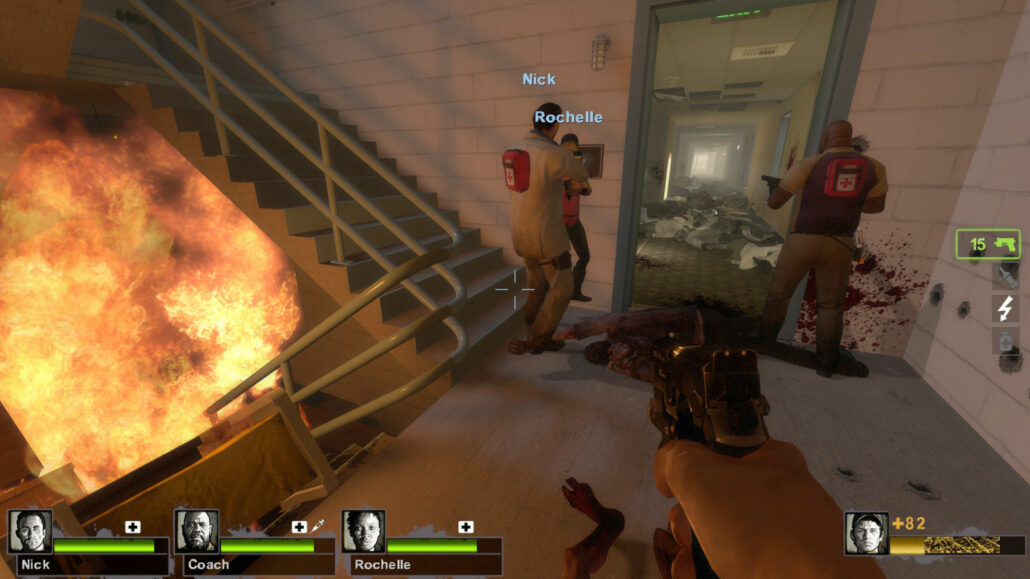
The hotel had fires that I had to walk around, and later the smoke from it permeated the corridors, making it slightly difficult to see where we needed to go. Near the shopping mall, a voice behind a door gave us the small quest of fetching a six-pack of cola and return it to him. But apart from this, the two levels I tried were straightforward. It didn’t feel like an actual story took up much script code in this game.
It didn’t take long until I felt the balanced wonder of this game. Sometimes the zombies were easy targets minding their own business at the end of corridors, at other times sheer fury got hold of them and we were overwhelmed. The zombies in this game were really fast runners and gangbangs like this could get quite tense. Luckily my AI controlled team mates walked close along with me and were good shots.
I just wish they used bombs too, or sometimes took the initiative.
Apart from finding new guns and rifles, there were melee weapons such as bats, katanas, chainsaws and much more. Using the chainsaw was like being teleported inside one of Peter Jackson’s early gore movies. I usually stuck with the submachine gun – I liked a horizontal rain of bullets. Other things to pick up could be pipe bombs, adrenaline syringes, health pills, etc.

The zombies had various types apart from the usual runners. Big blokes could explode, jockeys could pin me down, some could spread poison around, and so forth. At one point I was even attacked by an insta-kill zombie witch. There was a bit of arcade game about that. It felt like being rushed by a space invader of a different color that was more resilient and offered more points when killed.
I sure understand why this series is so beloved. The gameplay felt really fun and thrilling. I even considered playing through the entire campaign. Perhaps if there had been a bit more meat to a story?
Minion Masters
Developer: BetaDwarf | Released: 2016 | Genre: RTS, Defense
Probably also a gift. It was a card-based real-time strategy game with a style and graphics that felt like it really wanted to be played on a mobile tablet.
The game had a grassy arena with two players on a pedestal on each side. By clicking cards as fast as their cooldown allowed, I could spawn minions on my own half. Some single, some in groups, and with various ways of attack and defense. They then moved slowly towards the opponent and his minions spawned by his card clicks. If the player itself was pummeled to death, I won the game.
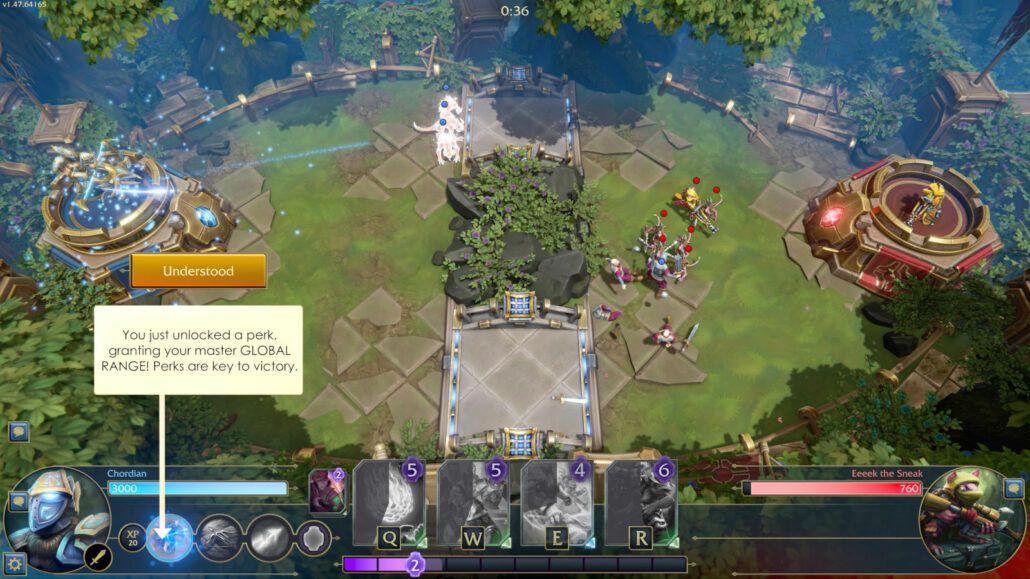
The gameplay seemed to lean a lot towards clicking one of four cards whenever they were ready, and not much else – but I only completed the tutorial and two one-on-one fights against real players. I won the first one and lost the second. In between fights I leveled up and sometimes gained new cards. I replaced a few cards with the new ones I had earned.
There was some fun to be had, but I couldn’t shake the mobile first feeling. I also don’t like playing against humans I know nothing about. As the exploring type of gamer, I feel like I’m a fish out of water.
Red Orchestra 2: Heroes of Stalingrad
Developer: Tripwire Interactive | Released: 2011 | Genre: FPS, Tactical
The single player feature was removed from this game in 2014, and later the game was also removed from Steam. But I’ve had the single player version in my backlog for ages, and that’s why I could check it out.
The tutorial was cute. The unseen but shouting commander telling me how to use weapons and offering tips was effective. I learned to use all the rifles, grenades, a stationary turret, how go prone, etc.
There were two campaigns – in the first campaign I was in the German army, and in the second I would have been in the Russian army. Playing as a German soldier sure must have been a gutsy move on the part of the developer. How did any producer accept this idea?
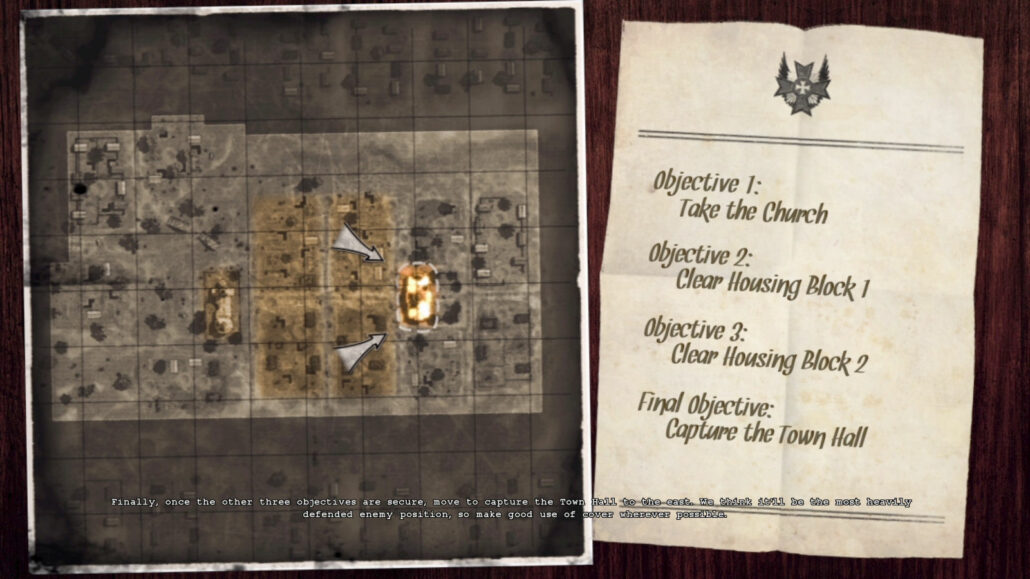
A mission started with a briefing telling me what buildings and areas the team had to secure one after another, and what resistance we might face in each of them. Typically clear one building, then the next. The gameplay itself was very chaotic. Both Germans and Russians typically ran around like chicken.
I was afraid the game would be something like Operation Flashpoint, where I could walk for a few seconds and then get shot by something I never saw coming. The game had some of this as it tried to be somewhat realistic – I could still be killed by just a few shots – but it also moved more towards Call of Duty, with team mates shouting all the time and a frenzied pace.
My health even recharged automatically if I managed to get away from whatever was firing at me.

If (no, scratch that, when) I was killed, I spawned as one of the other soldiers in the area. I actually thought that was a splendid idea. And the team was even reinforced as the mission went by.
Where Call of Duty put you in the front as the protagonist, I felt as an insignificant part of the team in this game. Typically a mission finished successfully because the AI team mates managed to shoot everyone while I was looking into a wall, reloading my rifle.
Just Cause 3
Developer: Avalanche Software | Released: 2015 | Genre: 3PS, Sandbox
Although I never wanted to complete this one, it was actually my intention to play this for enough hours to warrant writing a full blog post. However, the action in this game made me feel like the worst klutz and I wasn’t fond of all the dependency failures either.
So barely 1½ hours was all I could muster.
Having tried the first Just Cause and even completed Just Cause 2, I knew what I could probably expect, and a lot of the action and ruleset was indeed the same. I could shoot a grappling hook towards a higher point, drag myself in fast, then deploy the parachute for landing on the roof of a house. It had lots of shooting with fast reloading, and fast car racing with waypoint arrows on the road. All the usual stuff.
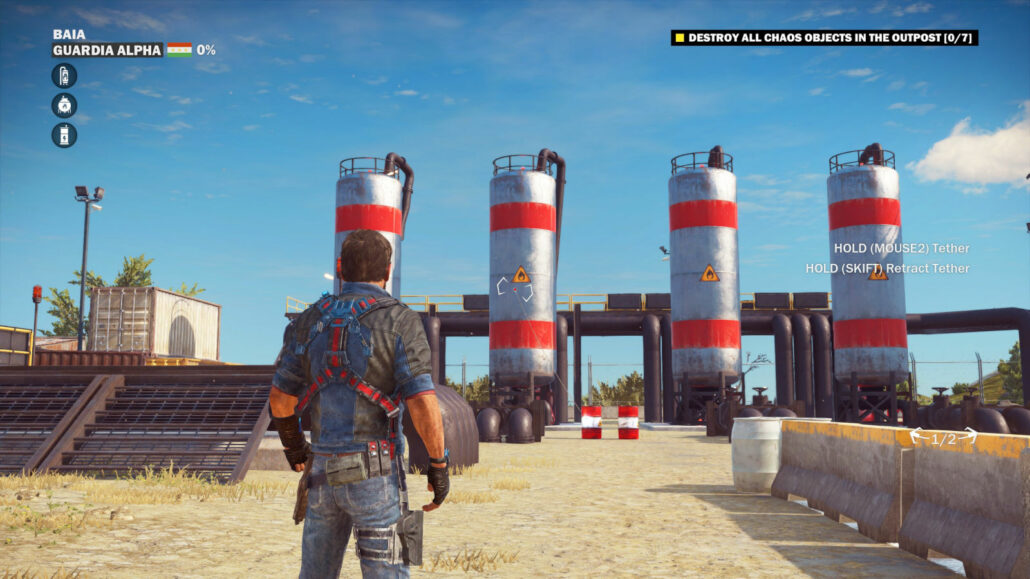
Among the new features that I got to taste in the short while I played it, I could now tether a smaller object to a bigger one and then retract the first towards the second. For example, an explosive barrel could be retracted towards a gas silo for a relaxed spectator explosion.
I also got a wingsuit for soaring across the landscape. I knew it was not supposed to a substitute for the parachute or actually make me fly, but I still had trouble staying afloat for long. Later, I tried a wingsuit challenge gliding through checkpoint rings. I hit the asphalt several times before succeeding.
The game felt like it was more heavy on story and cutscenes than the previous two games. Unfortunately this also meant a lot of loading. That felt pretty uncool in such an open world game. It also took forever to start the game. For some reason the title screen (without music by the way) was frozen for half a minute before it decided to log me online somewhere.
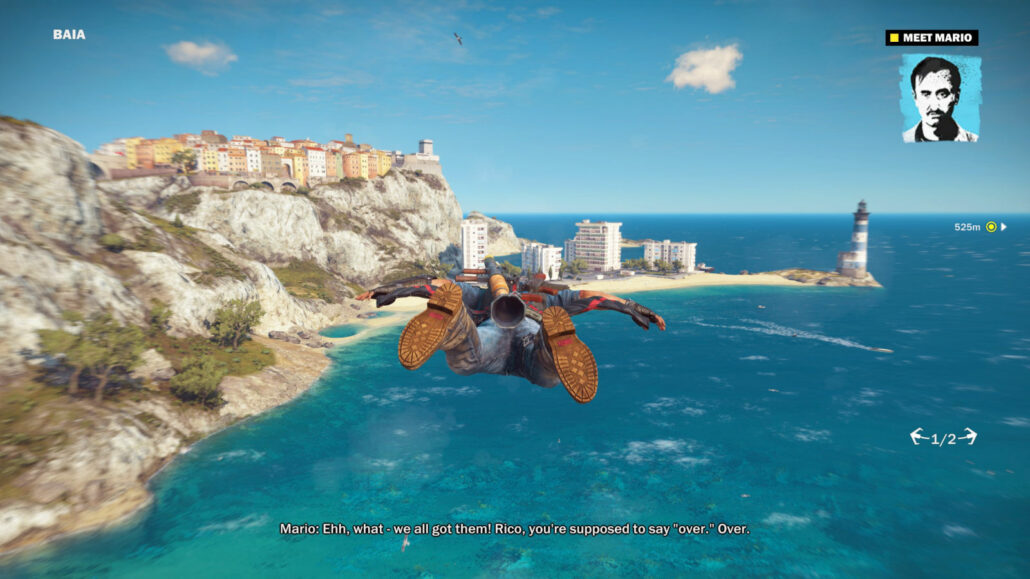
It also did a reverse first impression. The introduction had me land in a parachute from a small plane, and then I had to use the grappling hook fast to reach one Mario who was about to be gunned down by three bad guys. This had to be done really fast and with great precision. I had two mission failures here because of Mario dying, and I only managed it in the third attempt with a combination of strain and luck.
Already then I knew this would not be a game I wanted to play for long.
See also: Short Sessions, Part 11

